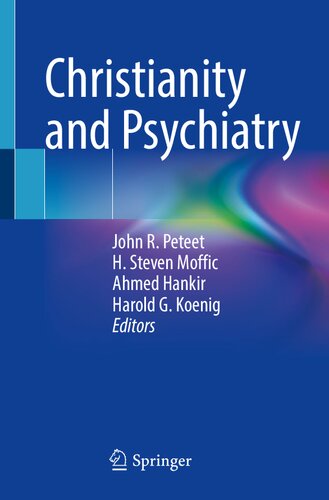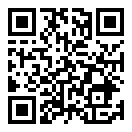Christianity and Psychiatry


<p>This book aims to help readers appreciate the many-faceted relationship between Christianity, one of the world’s major faith traditions, and the practice of psychiatry. Chapter authors in this book first consider challenges posed by historical antagonisms, church-based mental health stigma, and controversy over phenomena such as hearing voices. Next, others explore both how Christians often experience conditions such as mood and psychotic disorders, disorders in children and adolescents, moral injury and PTSD, and ways that their faith can serve as a resource in their healing. Twelve Step spirituality, originally informed by Christianity, is the subject of a chapter, as are issues raised for Christians by disability, death and dying. A set of chapters then focuses on the state of integration of Christian beliefs and practices into psychotherapy, treatment delivery, educational programming, clergy/clinician collaboration, and treatment by a non-Christian psychiatrist. Finally, there are chapters by a mental health professional who has been a patient, a Jewish psychiatrist, a Muslim psychiatrist knowledgeable about Christianity and psychiatry in the Muslim majority world, and a Christian psychiatrist. These chapters provide context, diversity and personal perspectives. </p><p><br></p><p>Christianity and Psychiatry is a valuable resource for mental health professionals seeking to understand and address the particular challenges that arise when caring for Christian patients. </p><br><p></p><p></p>
References
Introduction
Reference
Contents
Contributors
Chapter 1: The Fraught History of Psychiatry and Christianity
Introduction
The Early Church to the Middle Ages
Demonology, the Supernatural, and Early Medical Remedies: Augustine and Chrysostom
Fifteenth- to Seventeenth-Century Therapeutics
New Types of Treatments: “Physick” and Moral Therapy – Baxter, Rush, and Pinel
The Nineteenth to the Early Twentieth Century
Religious Enthusiasm, Hypnosis, and the Emergence of Modern Psychiatry
The Mid-twentieth Century to the Present
Christian Responses to Developments in Psychiatry, Psychotherapy, and Psychoanalysis
Conclusions
References
Chapter 2: Mental Illness Stigma in Christian Communities
Introduction
What Is Stigma?
Causes of Mental Illness Stigma
Stigma in Churches
Causes of Stigma in the Church
Validity of Psychiatric Diagnosis
Explanatory Models and Attribution Theory
Spiritual Explanatory Models
Medical Explanatory Model
Beliefs About Treatments
Cultural Factors
Practical Difficulties
Overcoming Stigma
Conclusion
Helpful Resources
References
Chapter 3: Psychotic Symptoms and Spiritual Phenomena
Introduction
Psychosis and Psychotic Symptoms
Psychotic Symptoms in the Bible and Christian Tradition
Hearing God
Demonic Possession
Healing
Care in Churches
Care in Mental Health Services
Conclusions
References
Chapter 4: Mood Disorders and Christianity
Introduction
Christianity and Mood Disorder Outcomes
Presentation: Differentiating Between Psychopathology and Spiritual States
Effect of Depression on Spiritual Life
Acedia: Depressive Symptoms and Spiritual Apathy
“Dark Night of the Soul”: Depressive Symptoms and Spiritual Growth
Mania: Heightened Religious States Accompanying Psychopathology
Religious Coping with Mood Disorders
Conclusion
References
Suggested Resources
Chapter 5: Working with Christian Children and Families
Introduction
Christian Worldview of Children, the Family, and Child Development
Impact of Christianity on Emotional and Mental Well-Being
Christianity and Attitudes Toward Psychiatry
Role of Culture, Ethnicity, and Denominational Differences in Christianity and Parenting
Approach to Assessment and Practice
Clinical Vignettes
Vignette 1
Vignette 2
Summary and Conclusions
References
Chapter 6: Trauma
Introduction
Definitions
Integration
Christian
Trauma
A Biblical View of Trauma
A Neuroscientific View of the Body
A Christian View of the Body
Treating Trauma
Obstacles for Christians in Trauma Treatment
Slow Breathing Is Not Talked About in the Bible
Breathing Practices Are Found in Other Religious Traditions
Only God Can Heal
Use of the Bible to Shore Up Denial
It Is Wrong to Look Back at the Past
It Is Wrong to Identify Weaknesses and Character Flaws in One’s Father or Mother
Being a Good Christian Means Being “Nice”
Christianity as a Resource in Healing
Conclusion
References
Chapter 7: Understanding Moral Injury in Individuals: Current Models, Concepts, and Treatments
Introduction
Case Example
Defining and Conceptualizing Moral Injury
Christianity and Recovery from Moral Injury
Emerging Psychosocial Treatments for Moral Injury
Conclusion
References
Chapter 8: Moral Injury in Christian Organizations: Sacred Moral Injury
Introduction
Moral Distress, Moral Injury, Spiritual Distress, and Spiritual Injury
Spiritual Distress, Spiritual Injury, and DSM-5
Sacred Moral Injury: A Model
Protective Factors, Risk Factors, and Severity
Organizational and Systems Dynamics
Recovering the Sacred
The Process of Recovering the Sacred
Danny
Listening, Acknowledgment, and Validation
Apology and Forgiveness
Therapy
Compensation
Organizational-Systemic Change
Sacred Moral Injury in Other Religions
Role of the Mental Health Professionals
Conclusion
References
Chapter 9: Christianity and Disability
Introduction
Asking Big Questions
What Is Disability?
Insights from Christian Theology
Disability and the Bible
Disability and Healing
Using the Bible Faithfully
The Voices of People with Disabilities
Conclusion
References
Chapter 10: Miracles and Care at the End of Life
References
Chapter 11: Addiction and Twelve-Step Spirituality
The Intersection of Christianity and Twelve-Step Spirituality
Christian Origins of Alcoholics Anonymous
Outcomes and Mechanisms Common to Twelve-Step Recovery Groups
Why and How Do AA, TS, and TSF Work?
Christian-Based Twelve-Step Recovery Groups: How Are They Different from Other TS/TSF?
Finding the Right Mutual Help Group for Your Patient
Conclusion and Future Directions
Appendix
References
Chapter 12: Models of Integration of Christian Worldview and Psychiatry
Introduction
The “Integration” Debate
Models of Integration in Psychology
Integration Debates in Psychiatry
Epistemic Distinctions
Application to the Integration Debate
Use of Psychopharmacological Agents as a Case Example
Psychiatry as Normative Practice
Conclusion
References
Chapter 13: Christian-Integrated Psychotherapy
Background
Christian Religiously Integrated Cognitive Behavioral Therapy
Christian Spiritually Integrated Cognitive Processing Therapy
Treatment Recommendations
Cautions
Summary and Conclusions
References
Chapter 14: Models of Delivering Christian Psychiatric Care
Introduction
Historical Care (Tom Okamoto)
Current Models
St. Luke’s Health Center (Mena Mirhom)
Limitations
Benefits
Considerations in Starting a Church Clinic
Tyndale Psychiatry Clinic (Karen Wang and Alan Fung)
Minirth-Meier Clinics West Program (Tom Okamoto)
Implications for Practice (Tom Okamoto)
Summary and Conclusion
References
Chapter 15: Clergy-Clinician Collaboration
Introduction
Literature Review
Benefits
Challenges
Mental Illness Resources for Faith Communities
Models of Collaboration
The World After COVID
Conclusion
References
Chapter 16: Principles and Practice in Educating Christians About Mental Health: A Primer
Introduction (Alan Fung)
A Pastor’s Perspectives (Victor Shepherd)
Psychiatrists Teaching Christians About Mental Health (Tom Okamoto)
Mental Health Education in the Orthodox Christian Church (Mena Mirhom)
Commentary and Conclusions (Alan Fung)
References
Chapter 17: Called to Lead?
An Initial Calling…
Serve to Lead
A Wounded Healer?
Called to Serve
Called to Lead
So: What Is Christian Psychology and Who Are These Christian Psychologists?
Reference
Chapter 18: Treating Christian Patients as a Non-Christian Psychiatrist
Introduction
Do Patients Choose Psychiatric Practitioners by Religion?
How I Came to Treat Devout Christians
Vignettes About the Interface Between Christianity and Psychiatry
Mormonism, Alcohol Abstention, and Social Interaction
Mennonite Communitarianism
Pentecostalism and Apostolic Faith Healing
Burned-Over Districts, Glossolalia, and Seizure Disorders
Jehovah’s Witness and the Apocalypse
Catholicism and Abortion
Summary
References
Chapter 19: A Jewish Psychiatrist’s Perspective
Growing Up
Medical School and Residency
Career Choice
Scholarly Work
Administrative Work
Clinical Work
Racism
Religious Groups of Psychiatrists
Conclusions
References
Chapter 20: Christianity from a British-Muslim Psychiatrist’s Perspective
Introduction
‘Out of the Frying Pan and into the Fire’
The Sabra and Shatila Genocide
‘The Wonder Years’
Return to the UK
Christian-Muslim Relations
Providing Mental Healthcare to Christian Patients as a Muslim Psychiatrist
Conclusion
References
Chapter 21: A Christian Psychiatrist’s Perspective
References
Index

امتیاز شما به این منبع
یادداشت های من
هنوز یادداشتی ثبت نشده است.
آمار
- بازدید: 30
تعداد نقد و نظر: 0
تعداد مورد علاقه: 0

دسترسی به این صفحه



